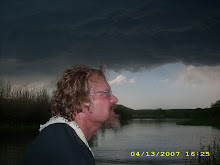
Bina laid in the shadow of the dune feeling the sand sift down her shoulders collecting in the damp of her stomach and forming yet another dune. The wind above blew more sand down the ridge creating tiny furled rows that avalanched in a steamy wave like sea foam coming off a breaker. She pushed her hand through the taupe, brown and red grains and marveled at their uniform size.
The dune field north of Ft Stockton, known as the Monahan’s Sand Dune field is a recent geologic phenomenon. Formed in the last 12,000 years as the Trans-Pecos became more arid, the windblown sands pile up against the western edge of the Llano Estacado and fan out west across the Pecos plains in a 60 x 20 mile swath to New Mexico.
Sparse vegetation and wind couple to shape these mobile sands into dunes. Constantly changing in shape, these elongated mounds are the result of the Aeolian process. Aeolia is the Greek god of wind. In science the Aeolian process is about how the wind shapes the surface of the earth through erosion, transportation and deposition of unconsolidated sediments in an area.
Wind erodes the surface by lifting up fine grained particles. Known as deflation these particles are transported often to nearby places but occasionally these particles reach the stratosphere and are sent far away. The turbulent eddy action of the wind also acts to change the shape of the surface sand. Abrasion is a third component of the Aeolian process whereby particles rub against each other changing their individual shapes.
Dunes are generally longer on the windward side. On the lee side the angle of repose is steeper making for a shorter slip face. The trough between dunes is called a slack.
Many specialized animals have evolved to adapt to the ever changing topography of a dune field. Most dunes form in arid and semi arid regions of the world but often water can be found several feet below the sand in the slacks of the dune.

No comments:
Post a Comment